5 Steps to Understanding Ming Dynasty women’s clothing

Ming Dynasty Hanfu, especially Ming Dynasty Women’s Clothing, is a fascinating aspect of Traditional Chinese Clothing. Known for its elegance and intricate designs, Hanfu Fashion from the Ming era often features complex names like “dui jin shu ling pipa xiu duan ao” or “xie jin shu ling chang ao.” While these terms may seem daunting, they become much simpler once you break them down. In this guide, we’ll walk you through five key steps to understanding Ming Dynasty Hanfu, making it easy for enthusiasts and newcomers alike to appreciate this timeless style.
In this article, we’re going to take you through the basics of how Ming Dynasty fashion is structured and how the naming system works. If you’re a fan of Ming-style Hanfu, this breakdown will hopefully be super helpful!
Ming Dynasty women’s clothing is a vibrant part of Hanfu’s legacy, blending elegance and symbolism. Curious about its intricacies? Dive in!
Step 1: The Collar (领,领子)
First up, we have the collar. In traditional Ming Dynasty fashion, collars come in various shapes and styles. The most common one is the cross-collar (交领), where the left side of the garment overlaps the right side (although, from the front, it’s actually the right side that overlaps the left). This style has been around since the Shang and Zhou dynasties and was still in use during the Ming Dynasty.
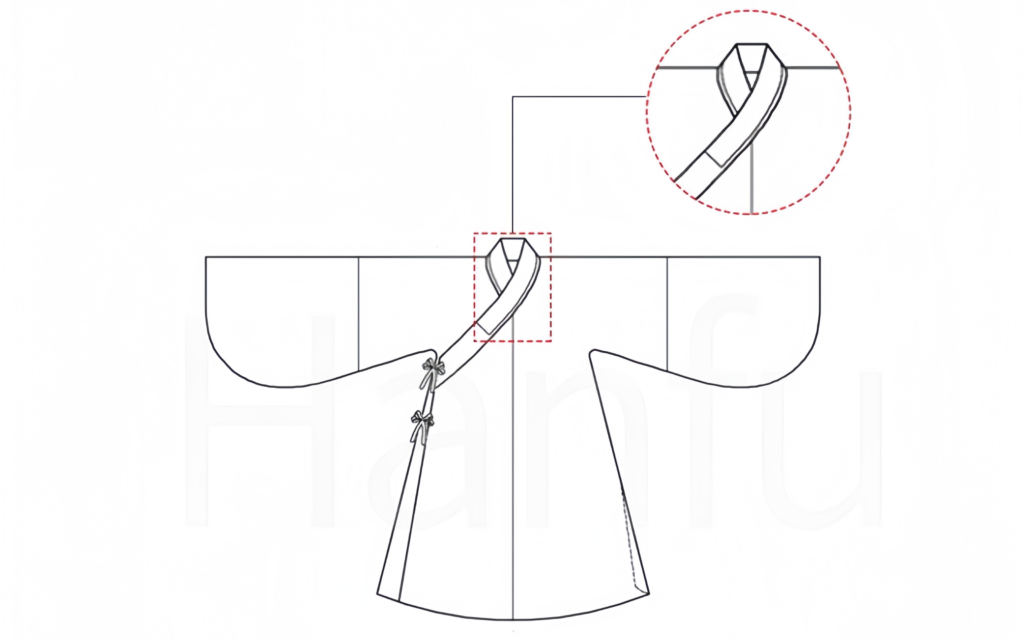
However, Ming clothing also featured other collar types, including round collars (圆领), square collars (方领), upright collars (竖领), straight collars (直领), and the more specialized Yi collar (义领). Each of these styles brought a slightly different vibe to the outfit, depending on the occasion and the wearer.
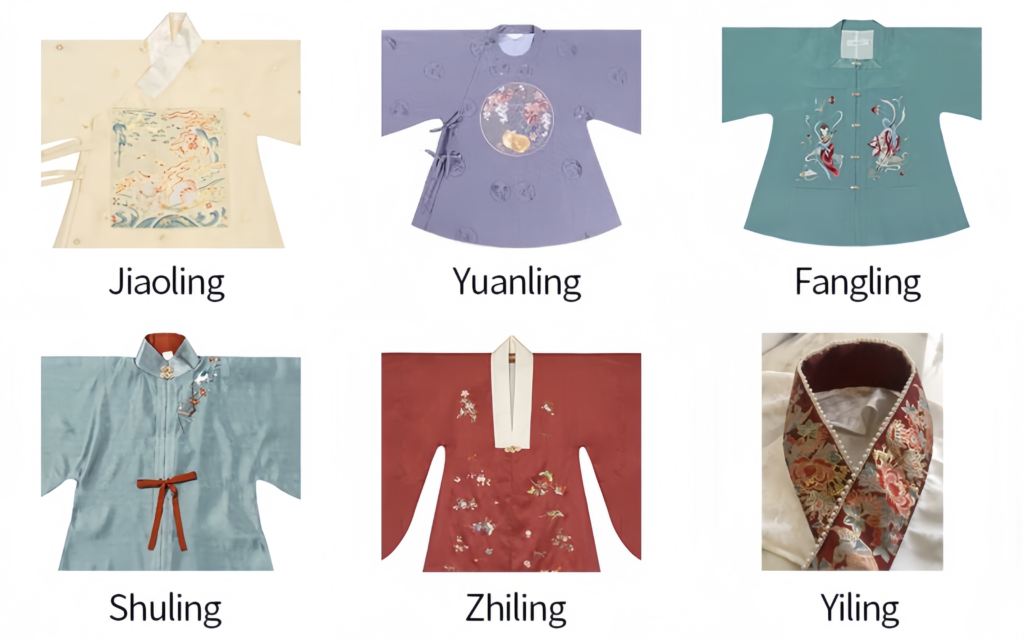
Step 2: The Front Overlap (衽)
Next, let’s talk about the front overlap (衽), or how the edges of the clothing come together. In the Ming Dynasty, there were two main types of overlaps:
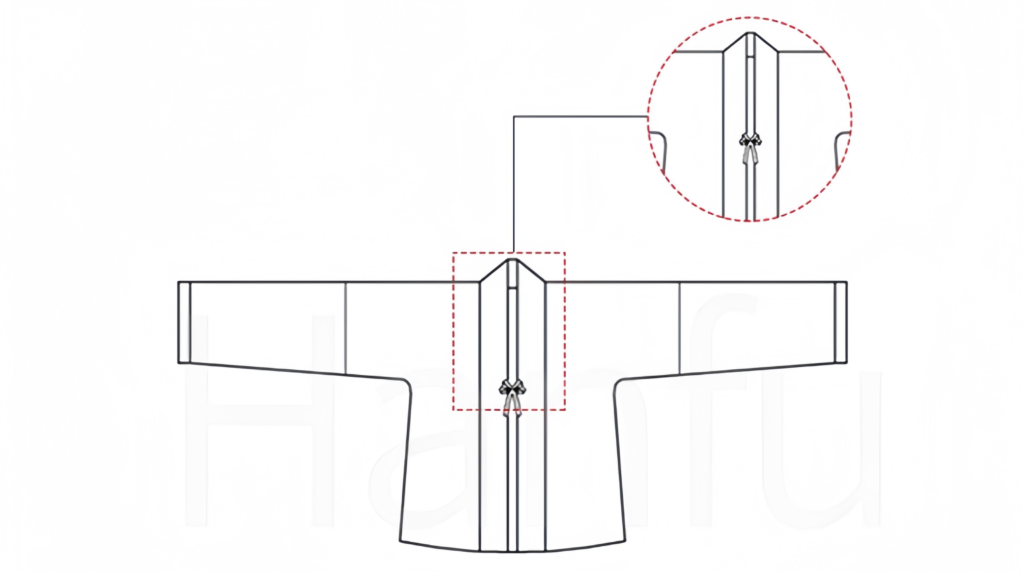
- Dui Jin (对襟): This is the classic “buttoned” style where the edges of the garment don’t actually overlap much, but instead, they meet in a straight line and are fastened with metal clasps or ties.
- Xie Jin (斜襟): Also known as the “diagonal overlap” or slanted lapel, this style involves the edges crossing over each other at an angle, following a more traditional way of wearing the clothes, especially in higher society.

Step 3: Sleeves (袖)
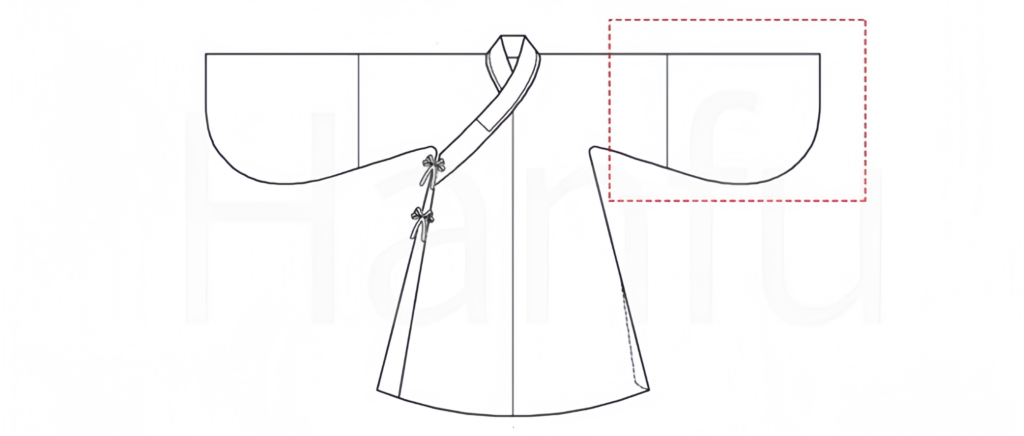
Now onto the sleeves, which are one of the most distinctive features of Ming-style Hanfu. There are a variety of sleeve styles, including:
- Narrow sleeves (窄袖): These are simple and practical for everyday wear, and can also be worn as inner layers.
- Straight sleeves (直袖): Straight across, no curves, just simple and clean.
- Pipa sleeves (琵琶袖): These are one of the most common sleeve types for Ming-style garments, named after the traditional Chinese instrument, the pipa, due to their wide, flowing shape.
- Half sleeves (半袖): These are worn over a short garment and are often seen as a casual piece in the Ming wardrobe.
- No sleeves (无袖): These are mostly seen with garments like the Bi Jia, which are worn over shirts and dresses. They were more of an outer layer.
- Large/long sleeves (大袖): These are a bit dramatic and can be found in both long and short versions, giving the wearer a flowing, elegant look.

Step 4: Cuffs (袪,袖口)
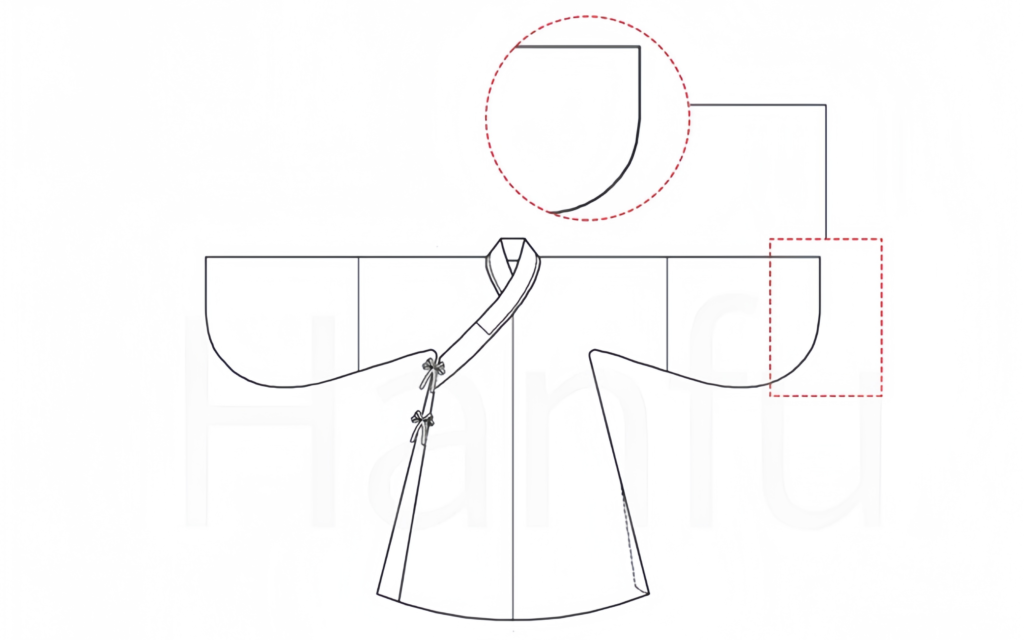
The cuffs or sleeve openings come in two main styles:
- Open cuffs (敞口): These are wide open at the end, often seen with long robes or outer garments.
- Tight cuffs (收敛): These cuffs taper in and can be either “inward-tapered” (内收收敛) or “outward-tapered” (外收收敛). You’ll see the “inward” style with broader sleeves and more formal wear, while “outward” tends to appear with tighter or more fitted clothing.

Step 5: The Outer Garment (袄)

The main outerwear in Ming Dynasty fashion comes in a few different types:
- Short jacket (短袄): A thick, warm piece of clothing, usually worn on the outside. It can be made of cotton and was common for both men and women, reaching just above the waist. These were very popular in the Ming and Qing dynasties.
- Cloth robe (布服): This was a type of coat, often worn by officials, and it was decorated with fabric ties or bands down the front. It was more of a formal upper garment.
- Long jacket (长袄): This one was longer, typically reaching down to the knees, and originated during the Yuan and Ming Dynasties.

Other Key Elements
- Cape (披风): This is a large outer garment with a straight collar and big sleeves, often worn over long robes for extra warmth and style.
- Ribbon (飘带): These long decorative ribbons were once functional ties for the collar but eventually became a stylish addition to garments. They were often flexible in where they were placed on the garment.
- Cloak (斗篷): A large, wide, sleeveless outer garment worn over the shoulders to keep warm.
- Shoulder cloud (云肩): Originally used to protect the shoulder area and keep the garment clean, this accessory eventually became an ornamental piece, adding extra flair to the outfit.
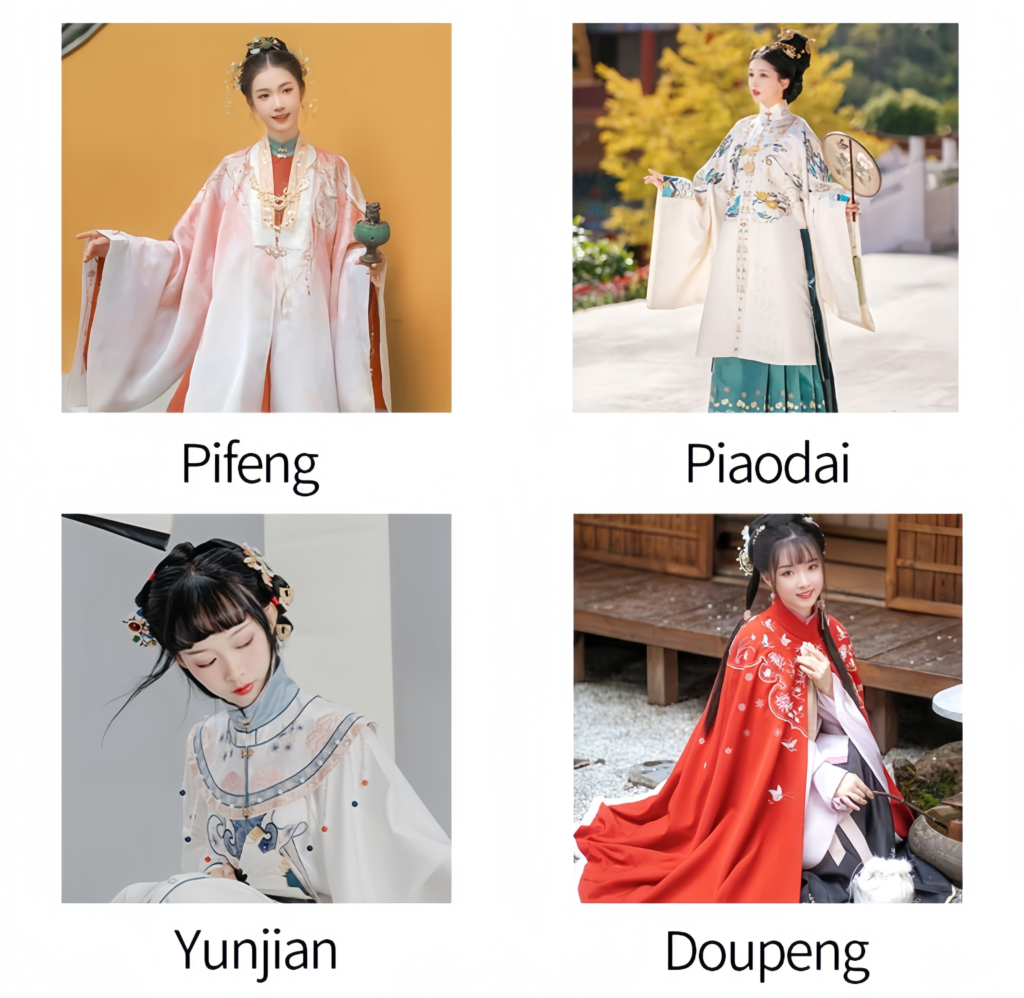
With all these components in mind, we can start to break down the naming of Ming Dynasty women’s clothing. For example, when you hear the term ‘dui jin shu ling pipa xiu duan ao’ (对襟竖领琵琶袖短袄), it translates to:
- Dui Jin = the front style (襟式)
- Shu Ling = the collar style (领式)
- Pipa Xiu = the sleeve style (袖式)
- Duan Ao = the type of garment (袄式)
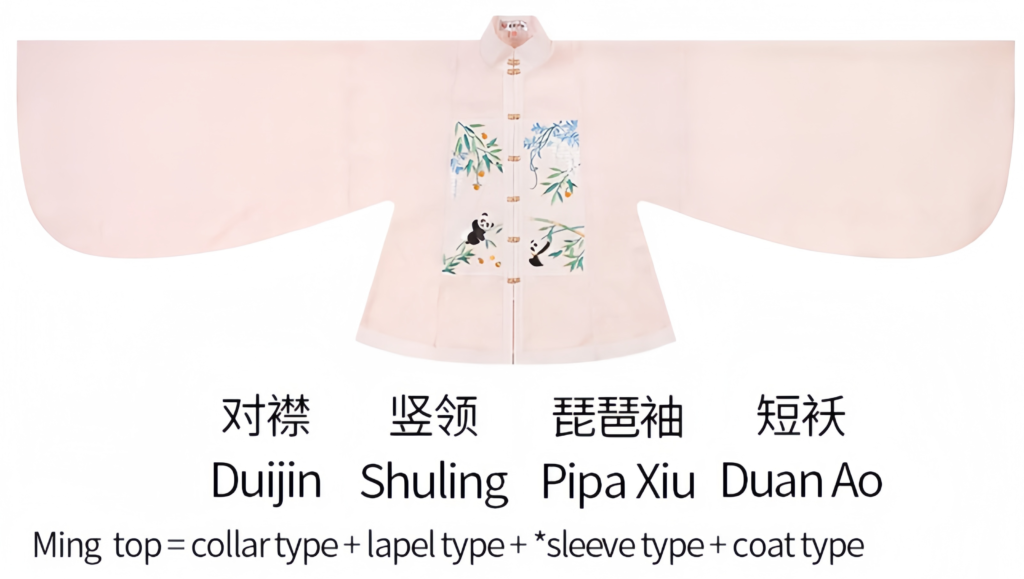
So, it’s all about combining these elements—collar, overlap, sleeve, and outer garment style—to give a full picture of what the clothing looks like.
Understanding Ming Dynasty women’s clothing doesn’t have to be confusing! Once you break it down into these key components, it all comes together. Each part has its own distinct role, and the beauty lies in how these pieces come together to create a sophisticated and elegant outfit. If you’re a fan of Ming-style Hanfu, this guide should give you a deeper appreciation of Ming Dynasty fashion!
Decoding Ming Dynasty Hanfu Names
Names like “dui jin shu ling pipa xiu duan ao” describe specific features:
- Dui Jin: Front overlap style.
- Shu Ling: Collar type.
- Pipa Xiu: Sleeve design.
- Duan Ao: Outer garment length.
This system makes Ming Dynasty Women’s Clothing both functional and descriptive.





Responses